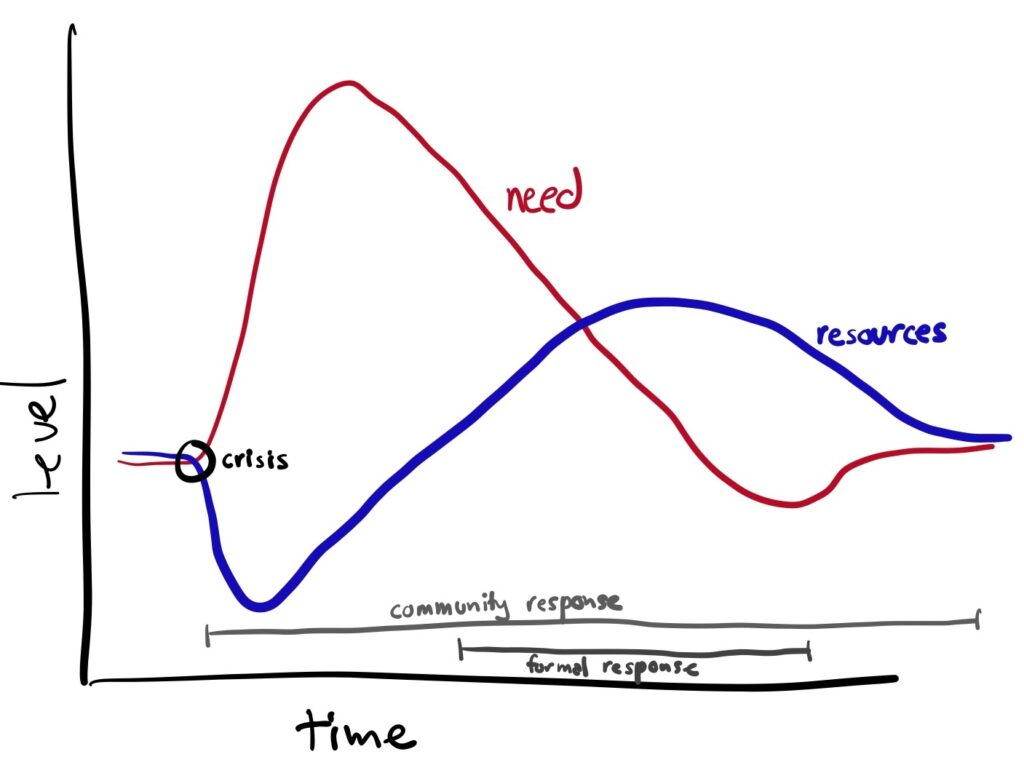Arc of disaster response
willowbl00 2024-08-09
There’s this standard graph of needs versus resources that emergency managers use.

It indicates that needs for an area are usually pretty steady, but when a disaster strikes, needs rise. Needs rise because some resources are destroyed and because people are distressed and injured (needing more resources than usual).
It also indicates that access to resources diminishes but then sees a huge surge in delivery, which then falls off. Access to resources fall when the infrastructure to maintain (like refrigerators) and gain (like a grocery store) might be out of commission, but then rise as external resources flow into the area, and then level off again as infrastructure is regained and external attention wanes.
This is also aligned with what I’m theorizing is the arc of engagement. In this, frontline populations (hey that’s you!) are ALWAYS the first to respond. As official response comes in, frontline populations can take a bit of a breather, but then step up again for the transition from official response to the new normal.

This also leads to some tensions – official response, while well practiced and educated in how to do response in general, do NOT know about the specifics of your region or your community’s needs. There are some time periods where you will need to show up and advocate for your unique situation, even if people providing you much needed resources struggle to listen. We are writing them a guide in HOW to listen, but YMMV.
The place you come in best while official responders are here are in last mile logistics and data. They will be deploying to large parking lots and trying to get people to go there to pick up resources and detail damage. You can gather that information from your at risk neighbors and coordinate with all your neighbors about which resources to prioritize, then bring that to the official responders.